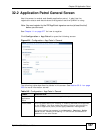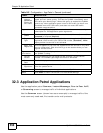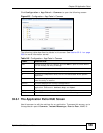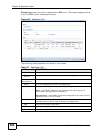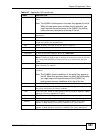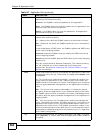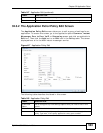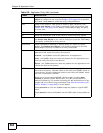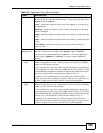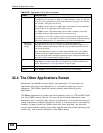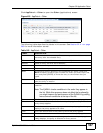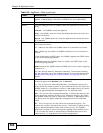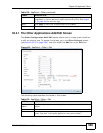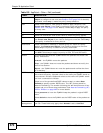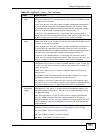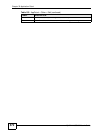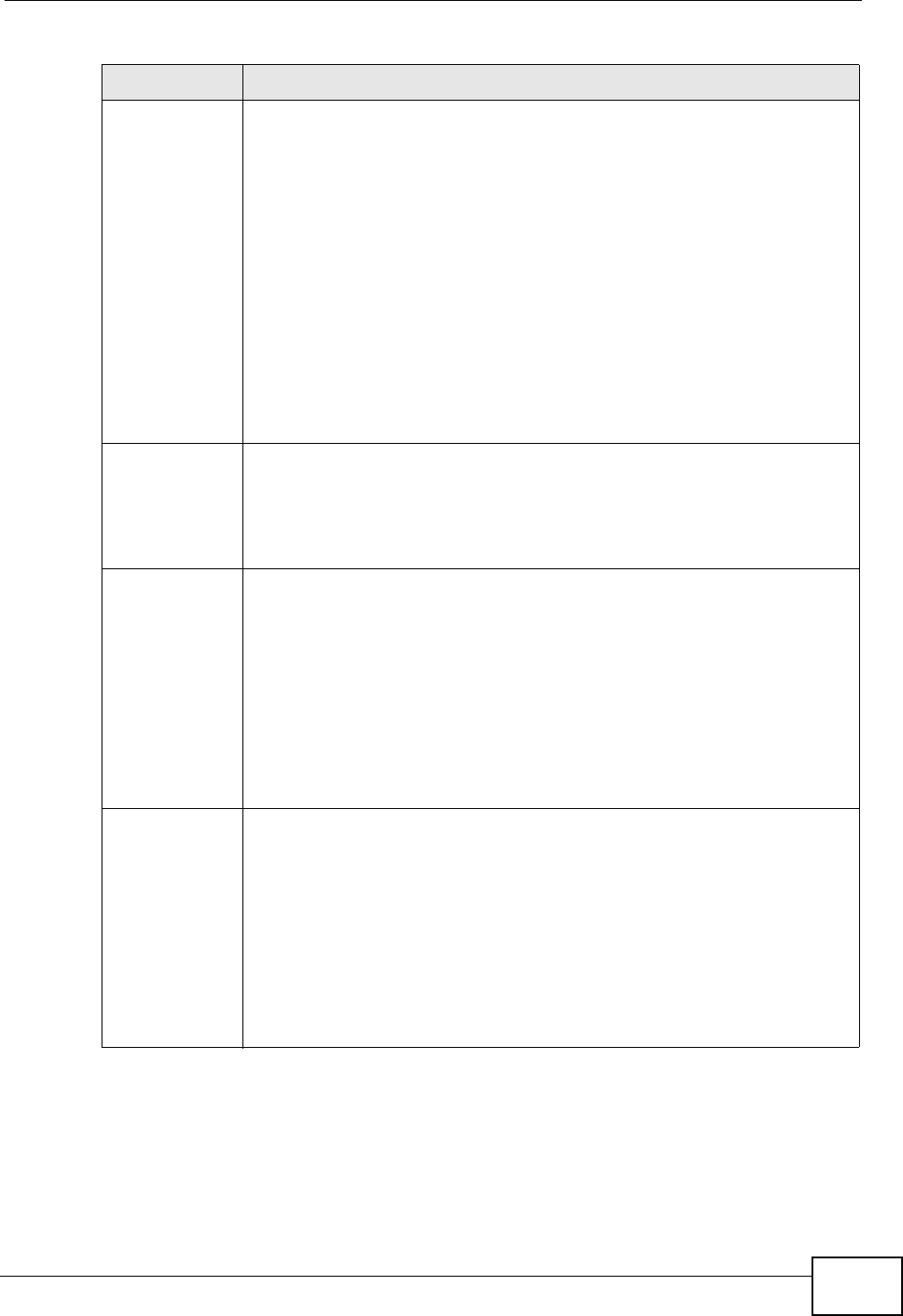
Chapter 32 Application Patrol
ZyWALL USG 300 User’s Guide
565
Action Block For some applications, you can select individual uses of the application
that the policy will have the ZyWALL block. These fields only apply when
Access is set to forward.
Login - Select this option to block users from logging in to a server for
this application.
Message - Select this option to block users from sending or receiving
instant messages.
Audio - Select this option to block users from sending or receiving audio
traffic.
Video - Select this option to block users from sending or receiving video
traffic.
File Transfer - Select this option to block users from sending or
receiving files.
Bandwidth
Management
Configure these fields to set the amount of bandwidth the application
can use. These fields only apply when Access is set to forward.
You must also enable bandwidth management in the main application
patrol screen (AppPatrol > General) in order to apply bandwidth
shaping.
Inbound
kbps
Type how much inbound bandwidth, in kilobits per second, this policy
allows the application to use. Inbound refers to the traffic the ZyWALL
sends to a connection’s initiator.
If you enter 0 here, this policy does not apply bandwidth management
for the application’s traffic that the ZyWALL sends to the initiator. Traffic
with bandwidth management disabled (inbound and outbound are both
set to 0) is automatically treated as the lowest priority (7).
If the sum of the bandwidths for routes using the same next hop is
higher than the actual transmission speed, lower priority traffic may not
be sent if higher priority traffic uses all of the actual bandwidth.
Outbound
kbps
Type how much outbound bandwidth, in kilobits per second, this policy
allows the application to use. Outbound refers to the traffic the ZyWALL
sends out from a connection’s initiator.
If you enter 0 here, this policy does not apply bandwidth management
for the application’s traffic that the ZyWALL sends out from the initiator.
Traffic with bandwidth management disabled (inbound and outbound are
both set to 0) is automatically treated as the lowest priority (7).
If the sum of the bandwidths for routes using the same next hop is
higher than the actual transmission speed, lower priority traffic may not
be sent if higher priority traffic uses all of the actual bandwidth.
Table 148 Application Policy Edit (continued)
LABEL DESCRIPTION



